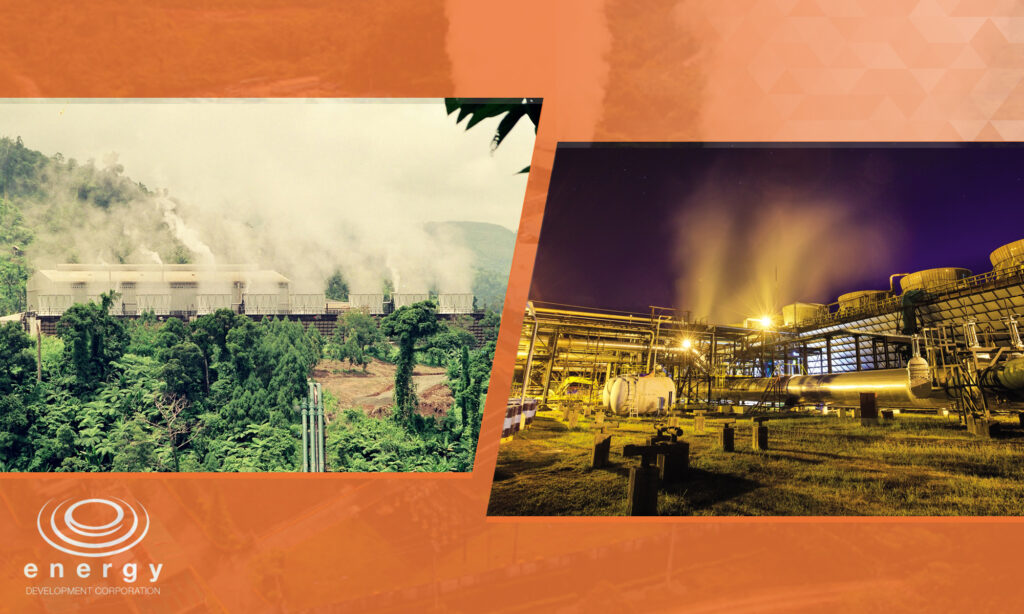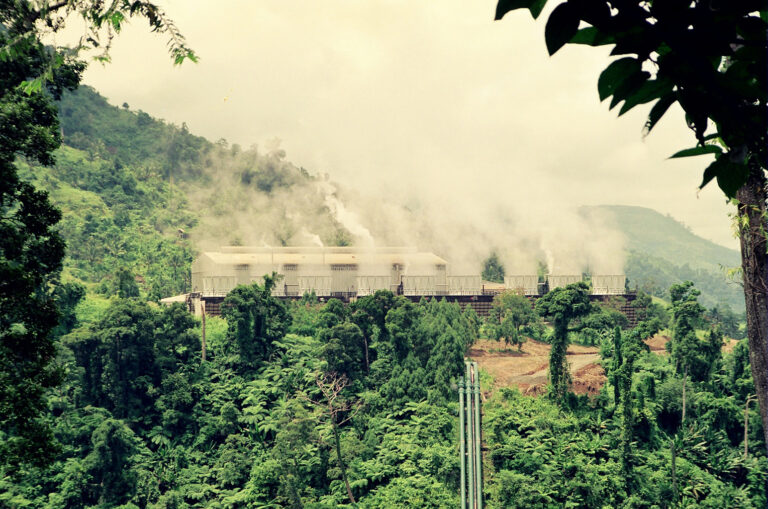 40th anniversary of the Tongonan geothermal power plant by the Energy Development Corporation in the Philippines.
40th anniversary of the Tongonan geothermal power plant by the Energy Development Corporation in the Philippines.An overview of the Tongonan geothermal power plant
Its beginnings can be traced under the Philippine National Oil Corporation Energy Development Corporation (PNOC-EDC), which was created to explore indigenous energy sources in response to the global oil crisis in the 1970s. After several years of intensive exploration and development work, the Tongonan-1 geothermal power plant was inaugurated on July 02, 1983.
Starting with a rated capacity of 112.5 megawatts (MW), Tongonan-1’s yearly gross energy generation in the following several years ranged from 200 to 400 gigawatt-hours (GWH), increasing up to 600 GWH in the 1990s—a boon during a dark period in the country’s history that was marked by frequent power outages.
This commitment to a secure energy future was further undertaken by the Lopez Group in 2007 when it acquired PNOC- EDC’s geothermal operations and gave birth to what is known today as the Energy Development Corporation (EDC). Under EDC and its regenerative strategy, environmental conservation efforts were institutionalized under BINHI, its flagship regreening program that seeks to propagate endangered, indigenous tree species in order to protect and grow water reservoirs that are critical to geothermal energy production.
EDC also launched the KEITECH Educational Foundation Inc. (KEITECH), a pioneering corporate social responsibility (CSR) program in Leyte that is focused on capacitating underserved high school graduates toward becoming highly skilled and employable in high-demand industries such as construction, metals and engineering, and tourism and hospitality.
Most importantly, EDC has overseen through the decades the strategic growth and expansion of the Tongonan plant into a veritable powerhouse—expanding its capacity to 123 MW through technical advancement and computerization, among many other improvements. To date, Tongonan holds an impressive record of generating a total of 23,460 GWH of energy since the start of its commercial operation in 1983.
A journey through the decades
1971 – The exploration of the Leyte geothermal resource began in the early 1970s at the behest of the Philippine Commission on Volcanology with a survey of surface geothermal phenomena in the Philippine Islands. In 1971, the Government of New Zealand did an assessment of the geothermal potential in Leyte as part of project by The Colombo Plan. The Tongonan Valley was chosen for a more detailed study following an assessment by the firm Kingston Reynolds Thom & Allardice Ltd (KRTA).
1973 – The 1970s Middle East oil crisis gave birth to PNOC through PD No. 334 on November 9, 1973. Limited oil exploration led to tapping geothermal energy.
1976 –PNOC-EDC was created as part of PNOC’s mission to explore other sources of indigenous, renewable, non-oil energy resources, such as geothermal.
1977 – Start of operation of the 3-MW Pilot Power Plant of National Power Corporation that supplied power to the geothermal project site and the nearby City of Ormoc.
1979 – Start of construction of the main power plant. By then, twelve (12) production wells with outputs averaging more than 10 MWe per well, and three (3) reinjection wells for waste water disposal, were already available for the 112 MW project.

An old photo of the 112-5 MW Tongonan geothermal power plant, Leyte, Philippines (source: EDC)
1983 – The first of the three units of Leyte Geothermal Power Plant was put into commercial operation in March 1983 and the third unit in July 1983.
Early 1990s – Under the leadership of then-President Fidel V. Ramos, Republic Act 6957 or the Build-Operate-Transfer (BOT) Law paved the way for a rapid development of energy projects. This helped in adding an additional 600 MW to the installed capacity in Leyte.
By 1997, PNOC-EDC had already sealed its position as the premier geothermal company in this part of the world with the Tongonan Geothermal Project in Leyte as the acclaimed world’s biggest wet steam field.
2001 – Republic Act 9136 or the EPIRA Law was passed, seeking the electric power industry by the privatization of generation, transmission, distribution, and supply of the power sector. The National Transmission Corporation (TRANSCO) and Power Sector Assets and Liabilities Management Corporation (PSALM) were created. The mechanisms and efforts for the privatization of the National Power Corporation (NAPOCOR) assets were initiated – including that of the Leyte Geothermal Power Plant.
2006/2007 – The geothermal power plants in Leyte under the BOT agreement were turned over to EDC from CalEnergy and Ormat after the completion of the 10-year cooperation period.
2009 – The Tongonan 1 Geothermal Power Plant along with the Palinpinon 1 & 2 Geothermal Power Plants in Negros were turned over to Green Core Geothermal, Inc., a subsidiary of EDC, after acquiring them from the National Power Corporation.
2013 – Super Typhoon Yolanda (Haiyan) made landfall in the Philippines and directly hit Ormoc and Kananga including EDC’s Leyte Site. TGPP was badly hit, damaging its cooling towers and buildings. In response to the government’s call for the immediate restoration of the power supply and to ensure availability of electricity in the community before the Christmas season, TGPP personnel, with the assistance of personnel from other sites, heroically restored the power plant.
Continuous improvement
Through the years of dedication and collaborative efforts, the Tongonan Geothermal Power Plant has become a symbol of sustainable progress, as well as the resilience of the personnel and facilities of EDC. The company has continued efforts to improve and upgrade the power plant in the last decade as further commitment to its sustainability.
From 2014 to 2017, work was done to increase the capacity of the power plant from 112.5 MW to 123 MW. This was done via a major rehabilitation, installing new turbine and generator rotors, generator-transformers, and pumps for the cooling system among others.
Another of the technological advancements in the Tongonan Geothermal Power Plant is shift from Analog Control System to a Distributed Control System. This shift enabled enhanced control and automation, thus improving precision, accuracy, and consistency in operations. It also empowered real-time monitoring and analysis, improved safety, flexibility, reduced maintenance and costs, and expanded remote monitoring and control.
Upgrades had also been implemented for the power plant’s Gas Extraction System and Liquid Ring Vacuum Pump, reducing steam consumption without compromising its performance – or even improving it, in the case of the LRVP. With this continuous research and use of cutting-edge technologies, EDC demonstrates that the pursuit for progress need not conflict with a commitment to the environment.
The journey of the Tongonan Geothermal Power Plant from 1983 to 2023 has been marked not just by growth, but by resiliency in the face of major challenges. The longevity of the project has become a testament to the sustainability of geothermal power projects and should serve as an example and inspiration as the rest of the world strives to build more geothermal capacity.